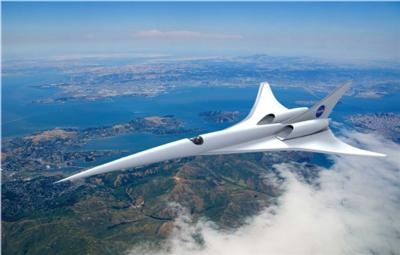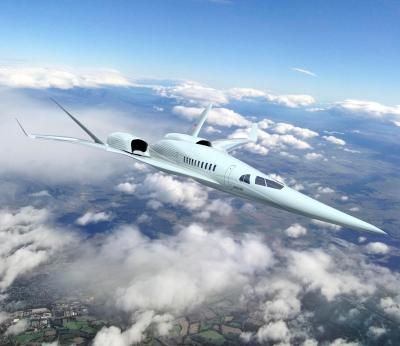Sun, May 08, 2016
New Software And Cockpit Displays Reduce Sonic Boom Noise Impact From Airplanes
Honeywell Aerospace is working with NASA’s Armstrong Flight Research Center to study the most effective way to visually inform pilots flying supersonic jets about sonic booms, a loud noise caused by current aircraft traveling faster than the speed of sound. Honeywell recently flight-tested new cockpit displays that help pilots see sonic booms before they happen so they can reroute and reduce the effects of aircraft noise over populated areas. By predicting sonic boom footprints, Honeywell will remove a key roadblock to speed up the introduction of supersonic travel and support one of NASA’s goals to modernize flight.

Early in 2015, Honeywell was awarded a two-year contract as part of NASA’s Commercial Supersonic Technology (CST) Project to aid in overcoming the issue of sonic booms as a roadblock to commercial supersonic flight. In their first year under the contract, Honeywell and NASA have designed and developed predictive software and display technology that has been successfully tested in flight over commercial airspace.
“NASA is committed to making supersonic flight over land a reality, and key to achieving this is to reduce the impact of sonic booms,” said Bob Witwer, vice president of Advanced Technology at Honeywell Aerospace. “Using the Honeywell User Experience design concept, our engineering team has tackled how to intuitively inform pilots about upcoming terrain, weather and more — now we are helping pilots predict and visualize noise to tackle sonic booms.”
“Important to our progress in reducing the sonic boom impact over land is to have a predictive sonic boom display in supersonic aircraft cockpits that ensures our future quiet supersonic aircraft remain below acceptable noise levels,” said Brett Pauer, NASA CST subproject manager at Armstrong Flight Research Center. “We have partnered with avionics companies like Honeywell to translate our NASA algorithms into an integrated avionics system that is tested and evaluated by pilots.”

Honeywell’s predictive software and displays for supersonic jets are in ongoing development and testing with NASA. The conceptual designs used under NASA’s Commercial Supersonic Technology Project are tied to Honeywell’s Interactive Navigation (INAV) technology. INAV is the aerospace industry’s first system providing the simultaneous display of traffic, terrain, airspace, airways, airports and navigation aids. INAV software is designed to allow easy addition of new display formats to existing cockpits, and the predictive software for sonic booms takes full advantage of this feature, allowing it to be effortlessly incorporated into existing and future airplanes. Already in use on Honeywell Primus Epic integrated cockpits on Dassault, Gulfstream, Pilatus and Beechcraft aircraft, INAV will help make the next generation of supersonic flight a reality.
(Source: Honeywell news release. NASA images from file)
More News
Airport Marking Aids Markings used on runway and taxiway surfaces to identify a specific runway, a runway threshold, a centerline, a hold line, etc. A runway should be marked in ac>[...]
"It is extremely difficult, if not impossible, for manned aircraft to see a drone while conducting crop-enhancing and other aerial applications at low altitudes and high speeds. We>[...]
Aero Linx: The Skyhawk Association The Skyhawk Association is a non-profit organization founded by former Skyhawk Pilots which is open to anyone with an affinity for the A-4 Skyhaw>[...]
“The T-54A benefits from an active Beechcraft King Air assembly line in Wichita, Kansas, where all required METS avionics and interior modifications are installed on the line>[...]
Aero Linx: Aerostar Owners Association The Association offers the Aerostar Owner a unique opportunity to tap an invaluable source of information concerning the care and feeding of >[...]
 ANN's Daily Aero-Term (04.28.24): Airport Marking Aids
ANN's Daily Aero-Term (04.28.24): Airport Marking Aids Aero-News: Quote of the Day (04.28.24)
Aero-News: Quote of the Day (04.28.24) ANN's Daily Aero-Linx (04.28.24)
ANN's Daily Aero-Linx (04.28.24) Aero-News: Quote of the Day (04.29.24)
Aero-News: Quote of the Day (04.29.24) ANN's Daily Aero-Linx (04.29.24)
ANN's Daily Aero-Linx (04.29.24)




